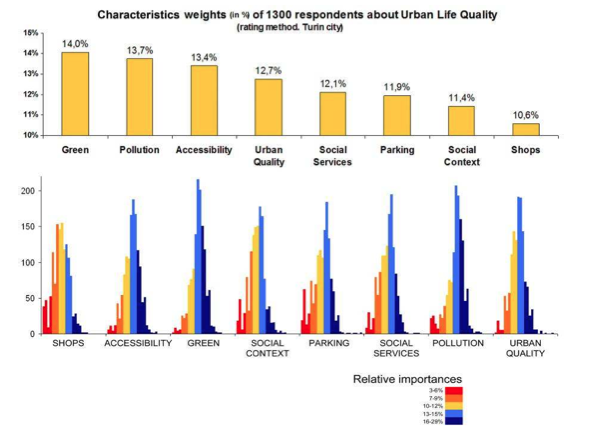Abstract
The magnitude increase of Urban Quality of Life studies is directly connected with the increase of the urban population in the world. Urban Quality of Life is a hierarchical multi-attribute concept whose attributes can be defined and evaluated by several kinds of methods such as Monetary (Hedonic Price, Willingness-to-pay, Cost-Benefit, Positional Value), Subjective (life satisfaction, subjective wellbeing, ranking/rating evaluation) and Quantitative (how many urban attractions there are in the city, and how they are distributed on its planimetry). As real examples of monetary approaches, 107 empirical literature results are briefly shown, quantifying the increase of property value in relation to urban factors such as green, open space, noise, public transport, pleasant view, etc. The result of a Willingness-to-Pay survey, and the definition of Positional Value are also shown; it is the part of property value coming from the characteristics of the area in which the property is. An analysis of Turin illustrated that the quality of the area (the Positional Value) can change the value of a property up to 143%. This value is, in a certain way, a monetary mirror of the quality of life of the areas. As a concrete example of subjective approaches two rating method surveys on Turin are rapidly exposed, as well as a recent subjective wellbeing study comparing the life satisfaction in cities and in the countryside. As quantitative approaches are proposed the concepts of Isobenefit Lines and the Isobenefit Orography, both from the spatial urban amenities distribution and quantity.
Keywords: City Wellbeing, Urban Amenities, City Centres, Urban Economy, Citizens Happiness, Isobenefit Lines



